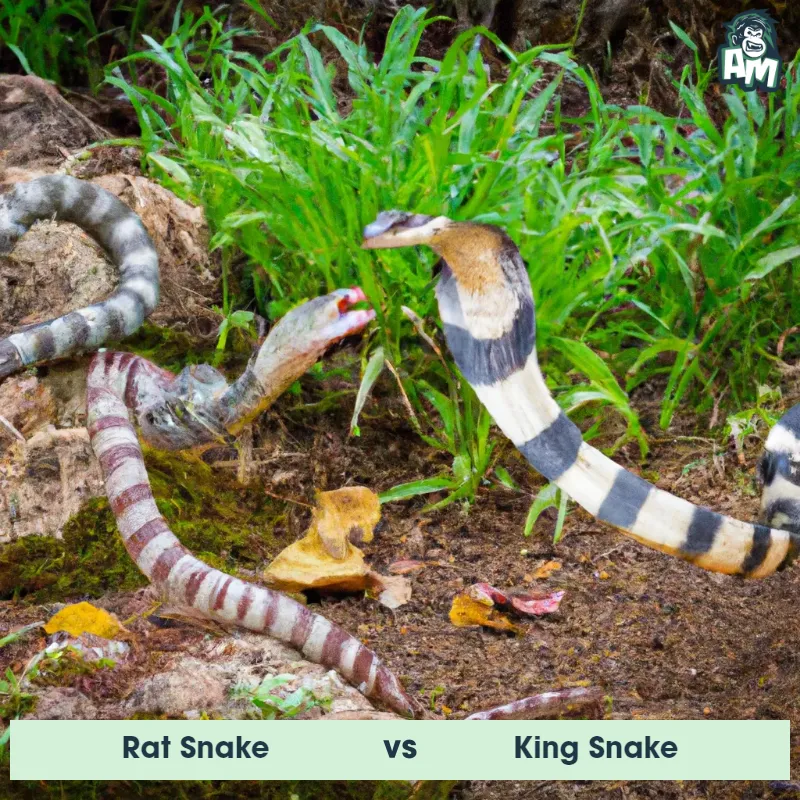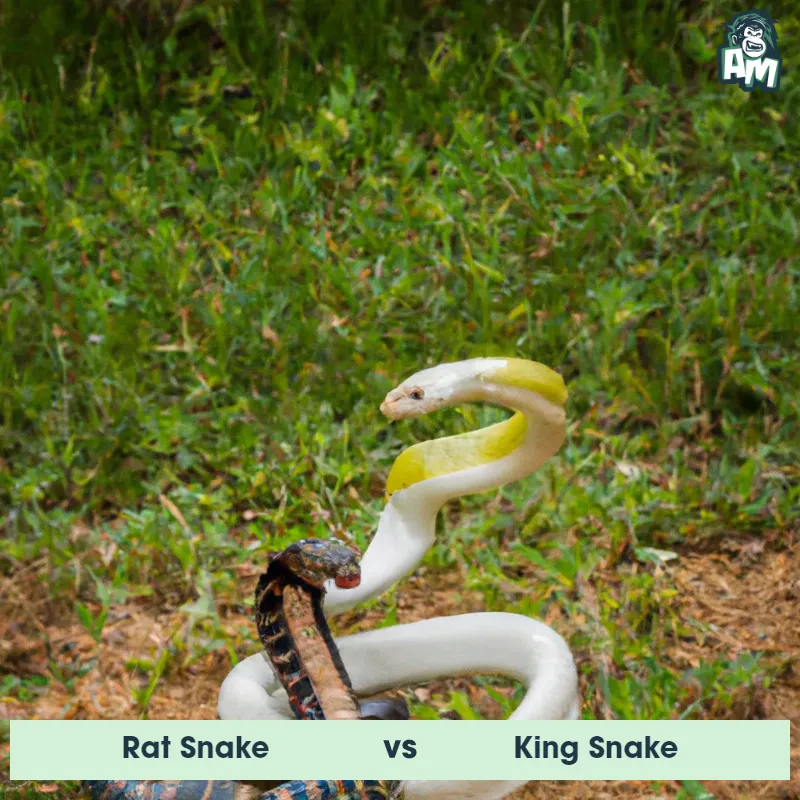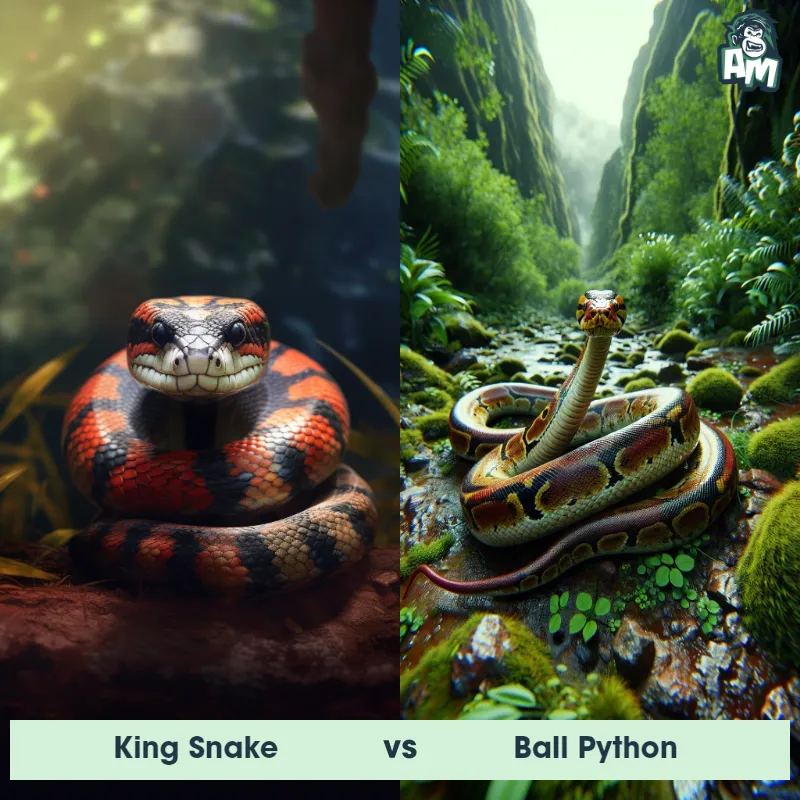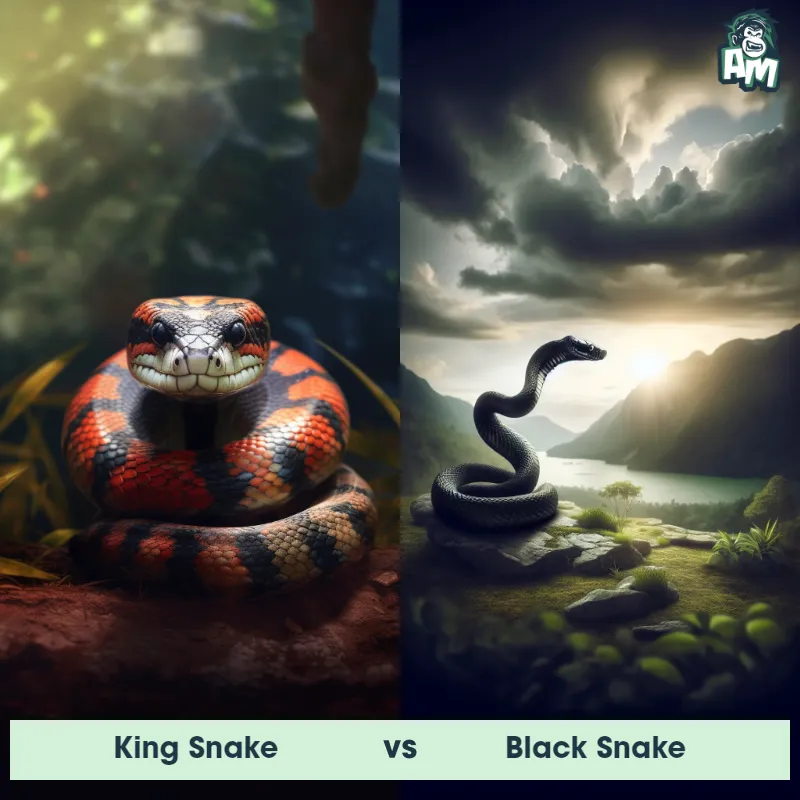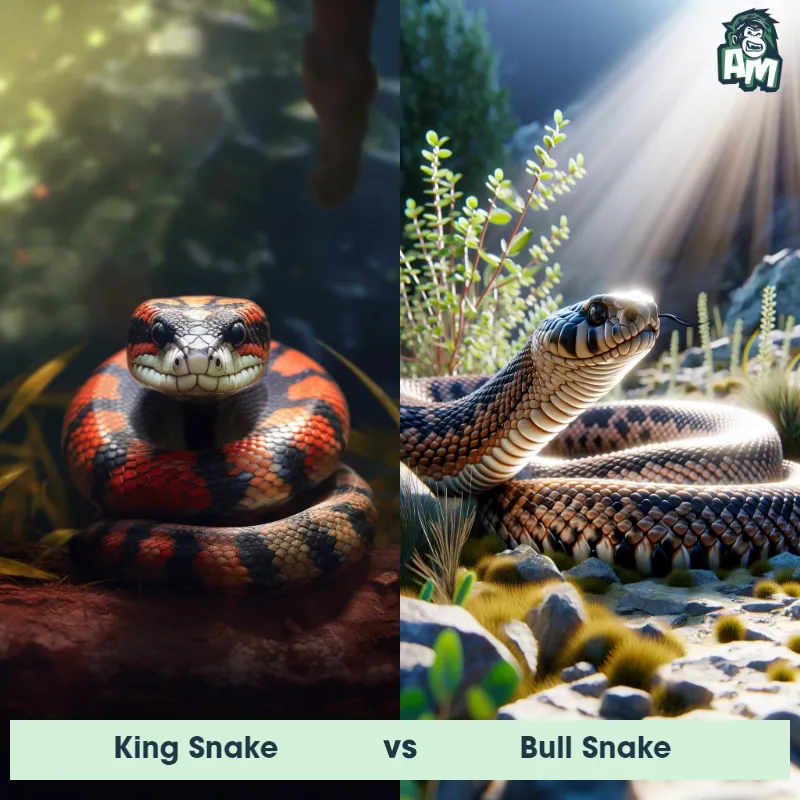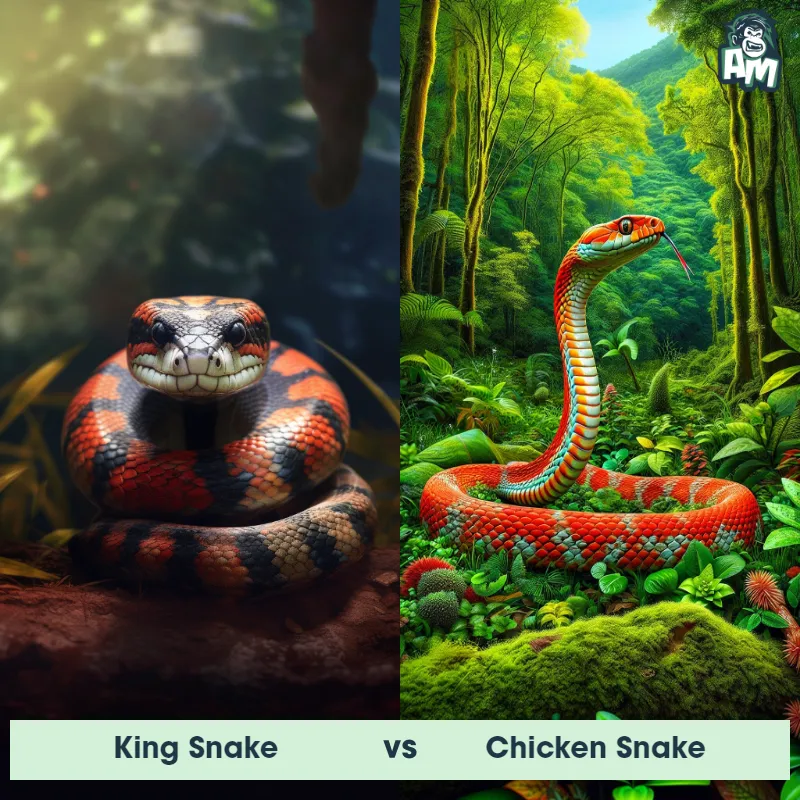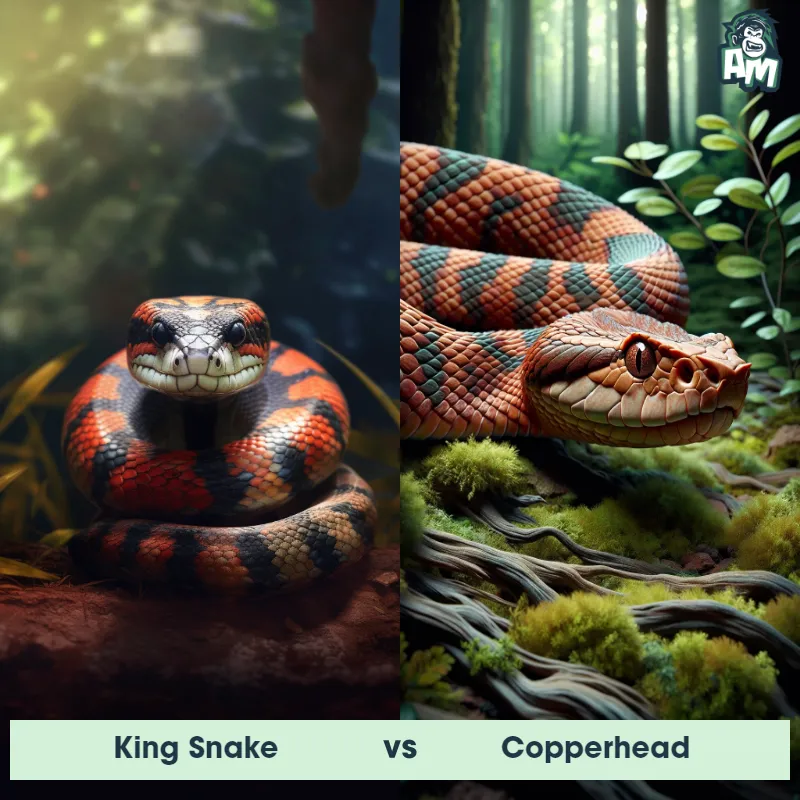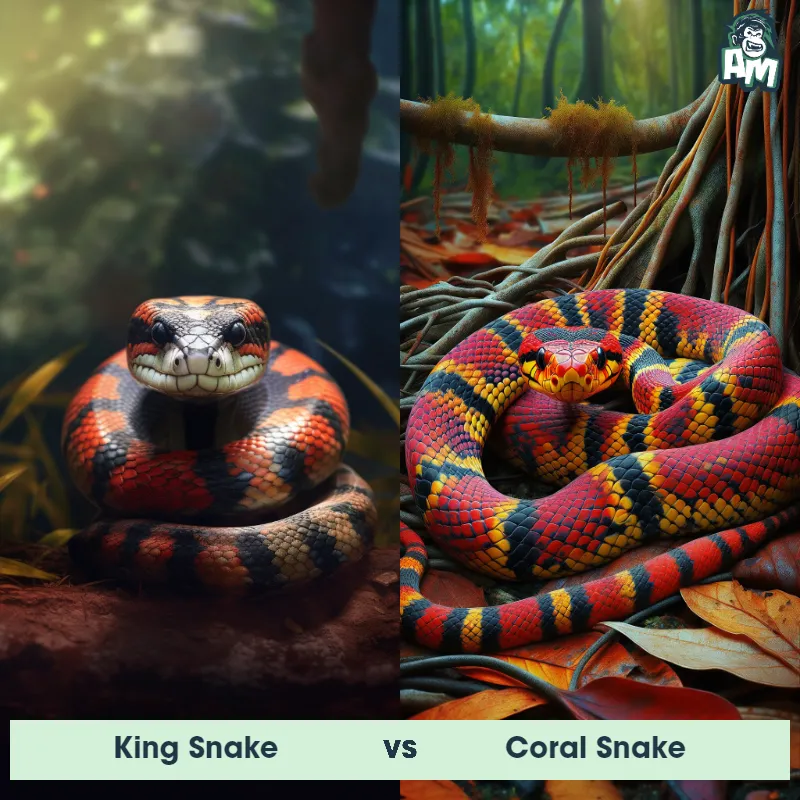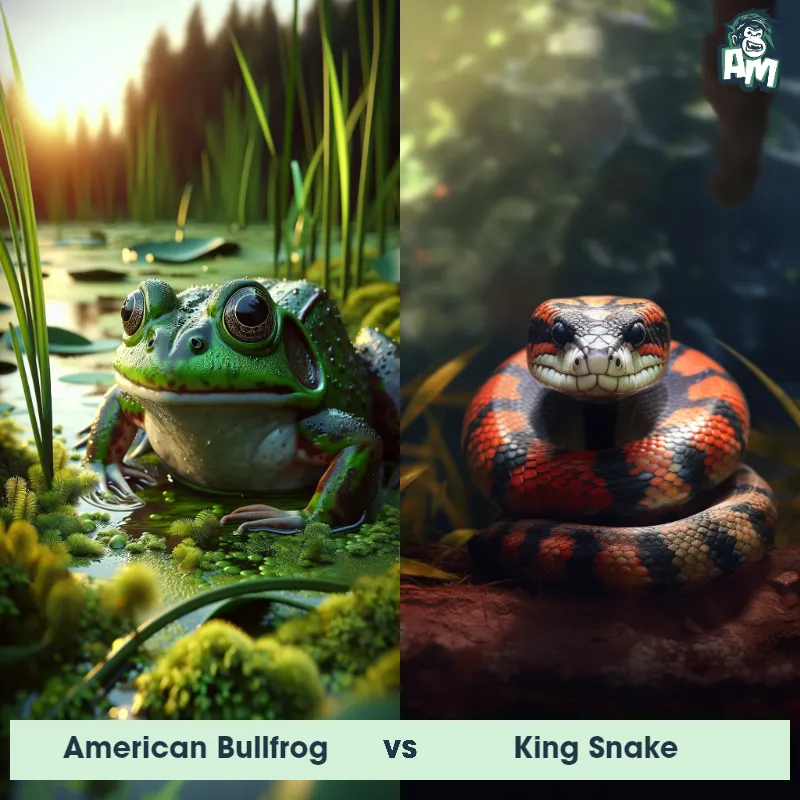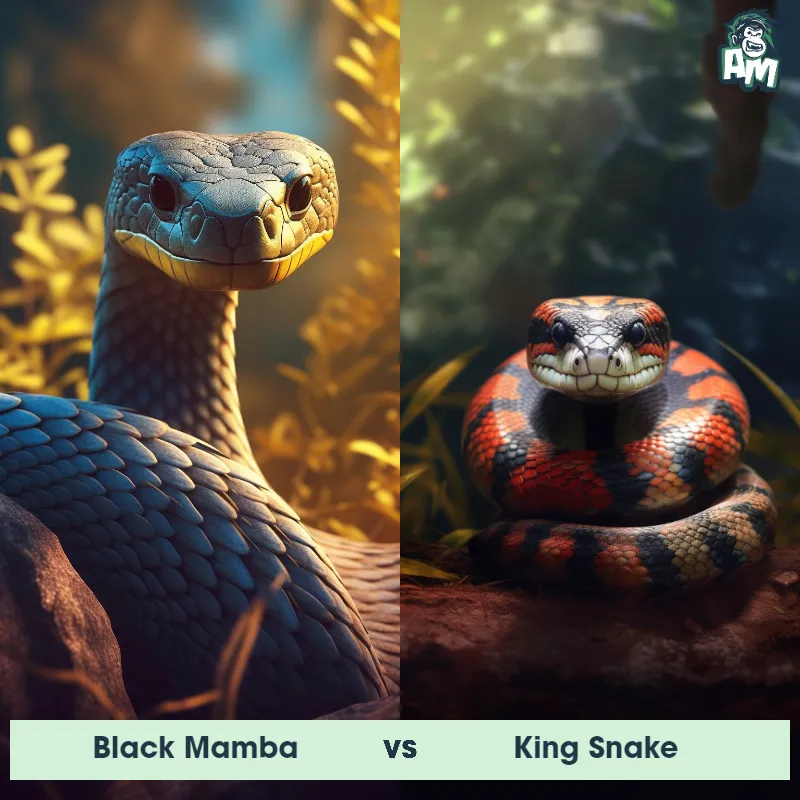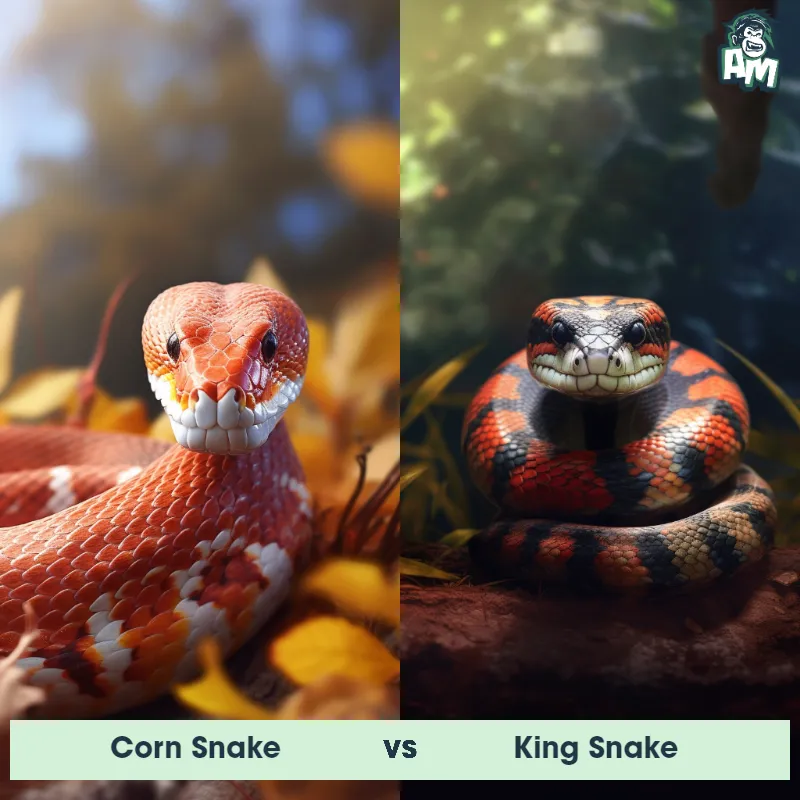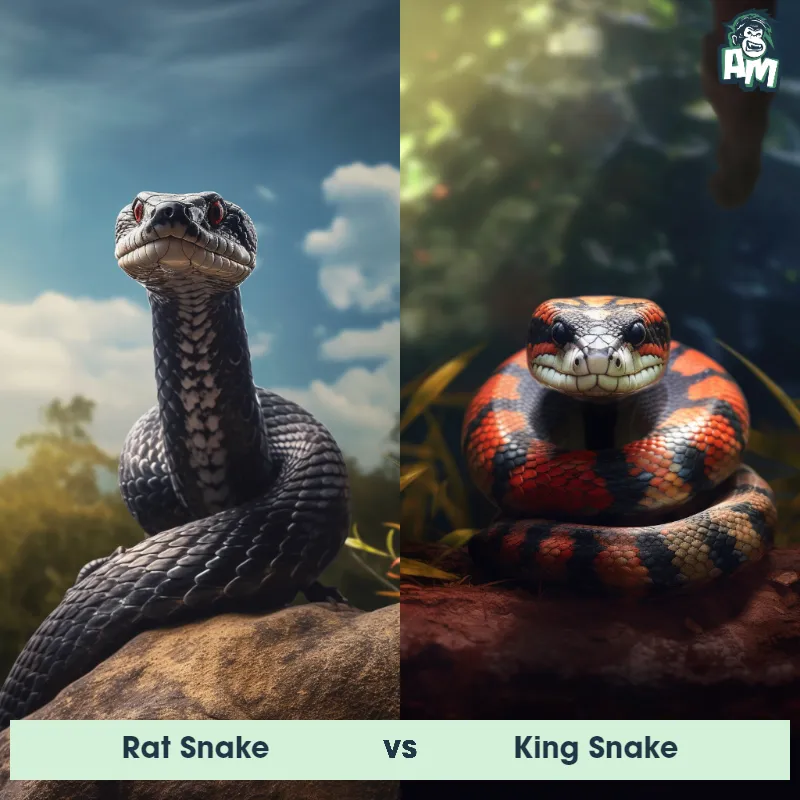The King Snake
The King Snake, also known as Lampropeltis getula, is a nonvenomous snake species found throughout North and Central America. These snakes are easily recognizable due to their striking coloration, which often features dark black or brownish bodies with distinct white or yellowish bands or stripes running across their entire length. Varying in size, King Snakes can grow up to 4 to 6 feet in length. They have a slender and elongated body, smooth scales, and a triangular-shaped head. These snakes are known for their powerful constricting ability, as they subdue and consume a wide range of prey, including rodents, birds, lizards, and even other snakes.
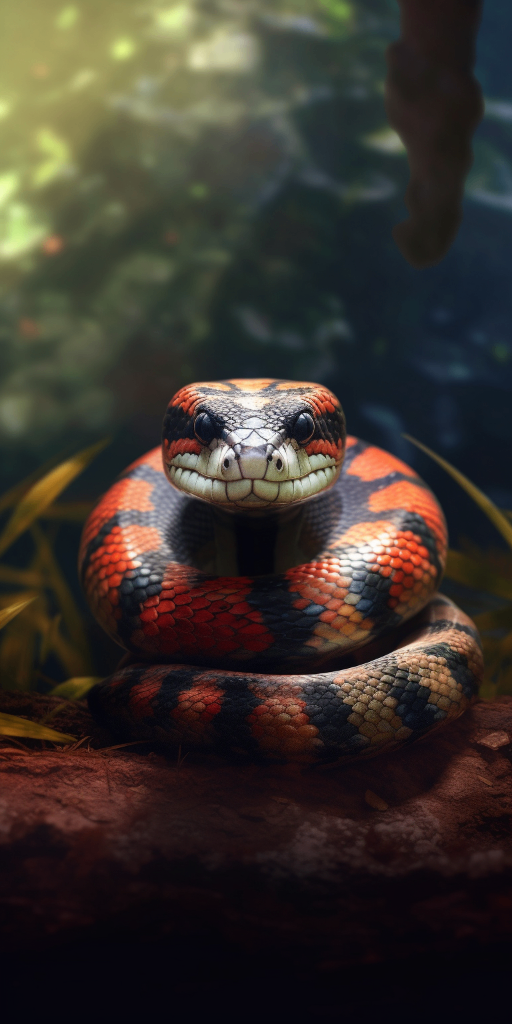
| King Snake | |
|---|---|
| Size | Up to 6 feet (1.8 meters) |
| Weight | Up to 4 pounds (1.8 kilograms) |
| Speed | Speed: 4 mph (6.4 km/hr) |
| Key Strength | Constriction |
| Biggest Weakness | None |
| Scientific Name | Lampropeltis |
| Family | Colubridae |
| Habitat | Terrestrial |
| Geography | North and Central America |
| Diet | Carnivorous, eats rodents, lizards, birds, and other snakes |
| Lifespan | 15 years - 25 years |

The King Snake
The King Snake, also known as Lampropeltis getula, is a nonvenomous snake species found throughout North and Central America. These snakes are easily recognizable due to their striking coloration, which often features dark black or brownish bodies with distinct white or yellowish bands or stripes running across their entire length. Varying in size, King Snakes can grow up to 4 to 6 feet in length. They have a slender and elongated body, smooth scales, and a triangular-shaped head. These snakes are known for their powerful constricting ability, as they subdue and consume a wide range of prey, including rodents, birds, lizards, and even other snakes.
Fun Fact: Contrary to their name, King Snakes are known for their remarkable ability to prey upon and even consume venomous snakes, including species like rattlesnakes and copperheads, due to their immunity to the venom.
| King Snake | |
|---|---|
| Size | Up to 6 feet (1.8 meters) |
| Weight | Up to 4 pounds (1.8 kilograms) |
| Speed | Speed: 4 mph (6.4 km/hr) |
| Key Strength | Constriction |
| Biggest Weakness | None |
| Scientific Name | Lampropeltis |
| Family | Colubridae |
| Habitat | Terrestrial |
| Geography | North and Central America |
| Diet | Carnivorous, eats rodents, lizards, birds, and other snakes |
| Lifespan | 15 years - 25 years |
Match Highlights
King Snake Matchups
We use AI to simulate matchups between the King Snake and other animals. Our simulation considers size, strength, and natural predatory behaviors to determine the most likely outcome.

Can't find the Matchup you want?
Create Your Own MatchupKing Snake: Diet, Predators, Aggression, and Defensive Behaviors
What do King Snakes eat?
King Snakes are known to be opportunistic feeders, meaning they will eat a wide variety of prey. Their diet consists mainly of rodents, birds, lizards, frogs, and other snakes. They are also cannibalistic and will not hesitate to eat other snakes, including venomous ones.
Do King Snakes have any predators?
While King Snakes are known for their excellent defense mechanisms, they do have predators in the wild. Some of their natural predators include birds of prey, larger snakes, and mammals such as coyotes and raccoons. However, their cryptic coloration and ability to blend into their surroundings make them a challenging target.
Are King Snakes aggressive?
King Snakes are generally not aggressive towards humans but can become defensive if they feel threatened. They will often hiss, vibrate their tail, and strike as a warning when provoked. However, they are not typically known to attack unprovoked and will usually try to escape rather than engage in a confrontation.
Do King Snakes fight with other snakes?
King Snakes are known for their cannibalistic behavior and will not hesitate to fight and consume other snakes, including venomous ones. They are immune to the venom of most North American snakes and have been observed hunting and killing larger snakes in the wild.
How do King Snakes defend themselves?
King Snakes have several defense mechanisms to protect themselves from predators. They rely on camouflage to blend into their surroundings, making them difficult to spot. When threatened, they may hiss, vibrate their tail, strike, or release a foul-smelling musk to deter predators. They may also constrict their bodies and try to escape if confronted.
What is the King Snake's biggest weakness in a fight?
Despite their impressive defensive capabilities, King Snakes do have a weakness when it comes to fighting larger predators. Their relatively small size and lack of venom make them vulnerable to larger mammals and birds of prey that can easily overpower them in a physical confrontation. This is why they rely on stealth, camouflage, and agility to evade predators in the wild.
Fun Fact: King Snakes possess a strong defense mechanism that involves mimicking the appearance and behavior of the venomous Coral Snake, which allows them to deter potential predators and avoid being attacked due to their resemblance.
Fun Fact: King Snakes are known to be ophiophagous, which means they have a specialized diet that primarily consists of other snakes, including smaller venomous species that most predators would avoid consuming, making them an important regulator of snake populations in their ecosystems.



